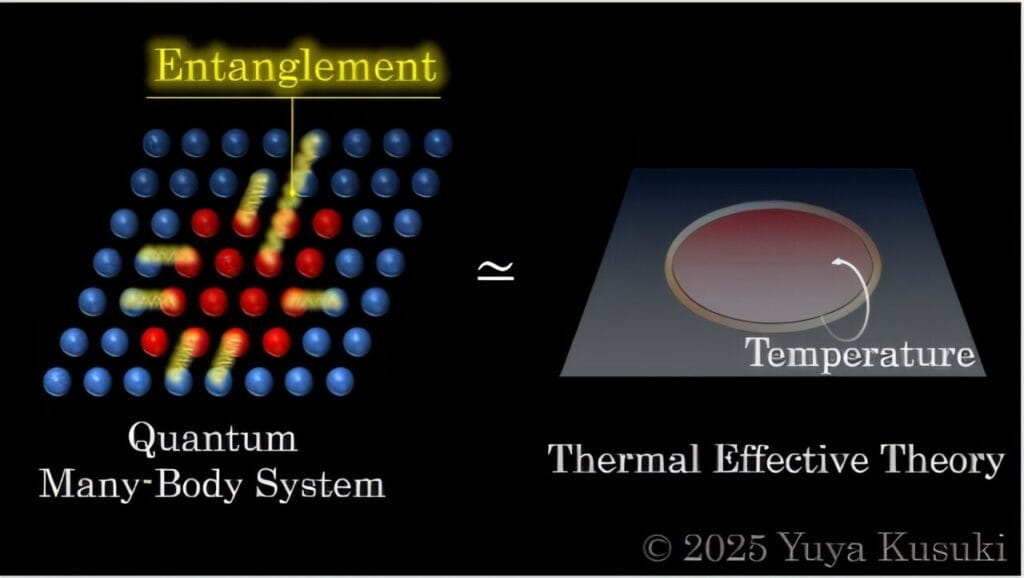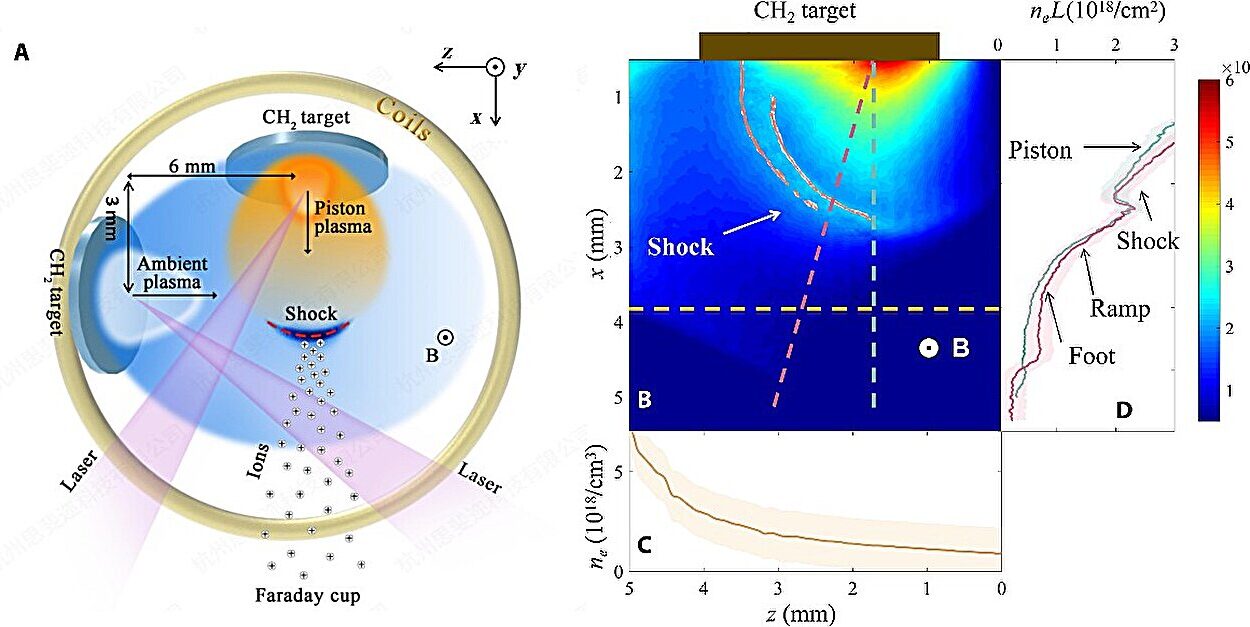In a leap forward for our understanding of the quantum world, a team of theoretical physicists has uncovered universal patterns that govern quantum entanglement — not just in the familiar world of one-dimensional systems, but across all possible dimensions of space and time.
The groundbreaking research, published in Physical Review Letters, represents the first successful application of a particle-physics technique known as thermal effective theory to the deep puzzles of quantum information science. The results suggest that, beneath the bewildering complexity of the quantum realm, there may be a set of simple, elegant rules that hold true everywhere.
“This study is the first example of applying thermal effective theory to quantum information,” said lead author Yuya Kusuki, Associate Professor at Kyushu University’s Institute for Advanced Study. “The results demonstrate the usefulness of this approach, and we hope to further develop it to gain a deeper understanding of quantum entanglement structures.”
What Makes Quantum Entanglement So Strange
In the everyday, classical world, objects behave independently once they are separated. A pair of billiard balls, once knocked apart, no longer influence each other. But quantum physics tells a different story. In this realm, particles can remain mysteriously linked — their properties perfectly correlated — even when separated by vast distances.
This phenomenon, known as quantum entanglement, has been called “spooky action at a distance” ever since Albert Einstein used the phrase in the 1930s. Today, it’s recognized not as a quirk, but as the very foundation of revolutionary technologies such as quantum computing, quantum encryption, and ultra-secure communication. Understanding exactly how entanglement is structured has become one of the central challenges of modern physics.
Measuring the Unmeasurable: Rényi Entropy
One of the most powerful mathematical tools for studying entanglement is Rényi entropy — a quantity that captures the complexity of quantum states and how information is distributed within them.
Rényi entropy isn’t just useful for mapping quantum computers. It plays a role in problems at the very edge of theoretical physics, including the black hole information paradox and questions in quantum gravity. By examining how Rényi entropy behaves, researchers can classify different quantum states and even determine whether large-scale simulations of many-particle systems are feasible.
But there’s a catch: while physicists have made great progress in understanding entanglement in the simplest “(1+1)-dimensional” systems (one spatial dimension plus time), pushing these calculations into higher dimensions has proved extremely difficult. The complexity skyrockets — like trying to track the motion of billions of dancers on an infinite dance floor.
Borrowing from Particle Physics
To break this barrier, Kusuki’s team — which included Hirosi Ooguri of the University of Tokyo’s Kavli Institute for the Physics and Mathematics of the Universe and Caltech, and Caltech researcher Sridip Pal — borrowed a set of analytical tools from a seemingly unrelated branch of science: high-energy particle physics.

The technique, thermal effective theory, was originally developed to strip away unnecessary details and reveal the universal behaviors of complex systems. Its core idea is simple yet profound: in many cases, the behavior of an entire system can be captured by just a handful of key parameters.
The researchers realized that if this approach works for the chaotic interactions of subatomic particles, it might also tame the complexity of entanglement in higher-dimensional quantum systems.
Universal Behavior in Any Dimension
Applying thermal effective theory to Rényi entropy, the team found that in the regime where the replica number (a parameter that appears in Rényi entropy calculations) is small, the results depend only on a few universal quantities — including the Casimir energy, a fundamental concept in quantum field theory related to the energy of empty space itself.
Even more remarkably, this universality holds not only for one-dimensional systems, but for any spacetime dimension. In other words, whether the quantum system exists in two dimensions, three, or some hypothetical higher-dimensional reality, the same underlying patterns still emerge.
The study also revealed how this universal structure determines the entanglement spectrum — essentially, the “fingerprint” of quantum correlations — particularly in regions where the spectrum’s eigenvalues are large. The researchers further examined how different methods of calculating Rényi entropy influence these universal patterns.
Why It Matters
This research is more than just a mathematical curiosity. By identifying universal features of entanglement, physicists can streamline numerical simulations of higher-dimensional quantum systems, which are notoriously resource-intensive. This could accelerate progress in designing quantum computers, exploring new phases of matter, and even probing the quantum structure of spacetime itself.
The implications also extend into the heart of theoretical physics. Since Rényi entropy and entanglement play central roles in discussions about quantum gravity and black hole information, this work could provide fresh insights into some of the deepest unsolved questions in science.
What Comes Next
Kusuki and his collaborators plan to refine and expand their framework, pushing it into new territories of quantum information research. The ultimate goal is to weave together particle physics, quantum computing, and gravitational theory into a single, more complete picture of how the universe stores and processes information.
In doing so, they are following a tradition as old as physics itself: looking for simplicity beneath apparent chaos. As this study shows, the universe may indeed be speaking a single, universal language — one that we are only just beginning to understand.
More information: Yuya Kusuki et al, Universality of Rényi Entropy in Conformal Field Theory, Physical Review Letters (2025). DOI: 10.1103/fsg7-bs7q






